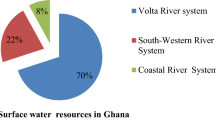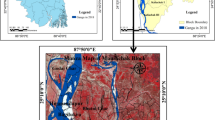Abstract
The Ussuri/Wusuli River basin joins the border between the Northeast region of Heilongjiang Province of China and the Far East region of Russia. The watershed consists of approximately 26 000 000 ha and the shared border stretches more than 1100 km. The Ussuri River forms part of the border between Russia and China. Two-thirds of the watershed ecosystem is in Russia, one-third in China. Khanka / Xingkai Lake is the border Lake of Russia and China, with the area of 4380 km2. The Ussuri / Wusuli River Basin is rich in wetland resources, including surface water resources and wetlands. There are about more than 100 rivers belonging to one and two branch rivers, wetlands are mainly distributed in the Sanjiang Plain in China, which is the largest marsh area in China, with an area of 114 million ha. Human activities and agriculture reclamation for many years have led to many environment problems: 1) decreasing of wetland area led to loss of wetland environment functions, decreasing of biodiversity and increasing the number of natural disasters such as disastrous drought and waterlogging, which affect directly sustainable utilization of resources and economical development. 2) water supply is not evenly distributed, water pollution in rivers, marshes and lakes are more serious than before. Based on above study, some suggests of sustainable development in the basin have been made, which include: 1) developing the international wetland natural reserve and domestic comprehensive protected area to prevent wetlands from destruction and disturbance by human activities, 2) strengthening the protection and management of wetlands in lake shorelines and riparian zones (rivers and streams) to prevent water quality of rivers and lakes from pollution, 3) restoring the destroyed marsh in riparian zones and the “island-like forests” of wetlands 4) developing positively transnational ecological tourist trade to promote the economic development in the river basin scope, 5) developing international cooperation research to promote sustainable utilization and protection of wetland resources.
Similar content being viewed by others
References
CHEN Gang-qi, NIU Huan-guang, LU Xian-guo et al., 1996. Mire-wetlands and Its Agricultural Reclamation in the Sanjiang Plain [A]. In: CHEN Gang-qi (ed.). Study on the Marsh in the Sanjiang Plain [C]. Beijing: Science Press, 152–158. (in Chinese)
GERALD A. COLE, 1979. Textbook of Limnology [M]. St. Louis, Toronto, London: The C. V. Mosby Company, 426.
LIU Hong-yu, 1998. Conservation of wetlands especially as waterfowl habitat in Northeast China [J]. Chinese Geographical Sciences, 8(3): 281–288.
LIU Ji-yuan, 1996. Remote Sensing Investigation and Dynamic Study on Resources Environment in China [M]. Beijing: China Science and Technology Press, 279–282. (in Chinese)
Author information
Authors and Affiliations
Additional information
Foumdation item: Under the auspises of the Major Project of the Chinese Academy of Sciences: (KZ951-B1-201-04).
Biography: LIU Hong-yu(1963 -), female, a native of Heilongjiang Province, master, associate professor. Her research interests in clude wetland landscape ecology and wetland GIS.
Rights and permissions
About this article
Cite this article
Liu, Hy., Lu, Xg. & Wang, Ck. Study on the sustainable development of wetland resources in the Ussuri / Wusuli River basin. Chin. Geograph.Sc. 10, 270–275 (2000). https://doi.org/10.1007/s11769-000-0011-z
Received:
Issue Date:
DOI: https://doi.org/10.1007/s11769-000-0011-z




